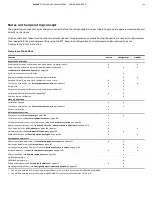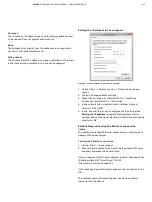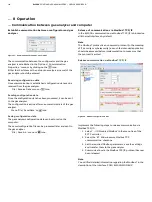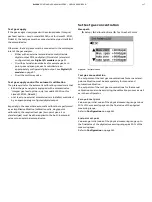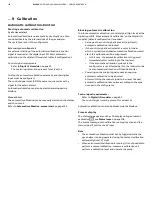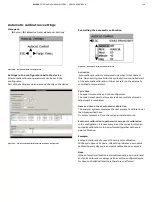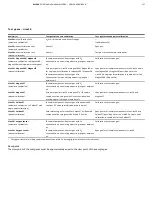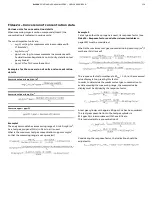
EL3000
CONTINUOUS GAS ANALYZERS | OI/EL3000-EN REV. D
125
Manual calibration: execution
Menu path
‘
Operation /
Calibration /
Manual Calibration’
Figure 68: ‘Manual calibration’ menu
Wait until the warm-up phase has ended
Analyzer module may not be calibrated until the warm-up phase
has ended.
Duration of the Warm
-
up Phase
Analyzer
Duration of the Warm-up Phase
Uras26
Without thermostat: approx. ½ h
With thermostat: approx. 2 h
Limas23
Approx. 2 hours
Magnos206
< 1 hours
Magnos28
< 5 h, The value may be elevated during first
commissioning or after a longer service life.
Magnos27
2 to 4 h
Caldos27
Approx. ½ h
Fidas24
Approx. 2 hours
ZO23
approx. 2 h, see for detailed information
Commissioning the gas analyzer
Note
• Zero-point calibration must always precede end-point
calibration. Zero-point calibration can also be performed on
its own.
• Manual calibration cannot be performed while an automatic
calibration is in progress.
Manually calibrating measurement components
Zero point / single point calibration
1. Select the ‘Zero Point / Single Point’ menu.
2. Select individual sample components or ‘All’ (according to
the configuration in the ‘Manual Calibration’ ECT dialog).
3. Check zero point set point* and set if necessary.
4. Connect zero point gas
(if it is not automatically connected).
5. Once the measured value display is stable, start the
calibration.
6. Save calibration or repeat calibration**.
End-
point calibration
1. Select the ‘Span’ menu.
2. Select the Sample component.
3. Check end point set point* and set if necessary.
4. Connect end-point gas
(if it is not automatically connected).
5. Once the measured value display is stable, start the
calibration.
6. Save calibration or repeat calibration.
End-
point calibration with calibration cell (option with
Uras26 and Limas23)
1. Select the ‘Calibration Cell’ menu.
2. Select sample component or ‘All’ (only possible with Uras26).
3. Connect zero point gas
(if it is not automatically connected).
4. Once the measured value display is stable, start the
calibration.
5. Save calibration or repeat calibration.
* The parameterized test gas concentration is displayed. If the setpoint is
altered here, the parameterized test gas concentration is overwritten.
** A calibration may have to be repeated if the measured value is stil not
stable after initiation of the calibration. The repeated calibration is based
on the measured value obtained in the preceding calibration.

